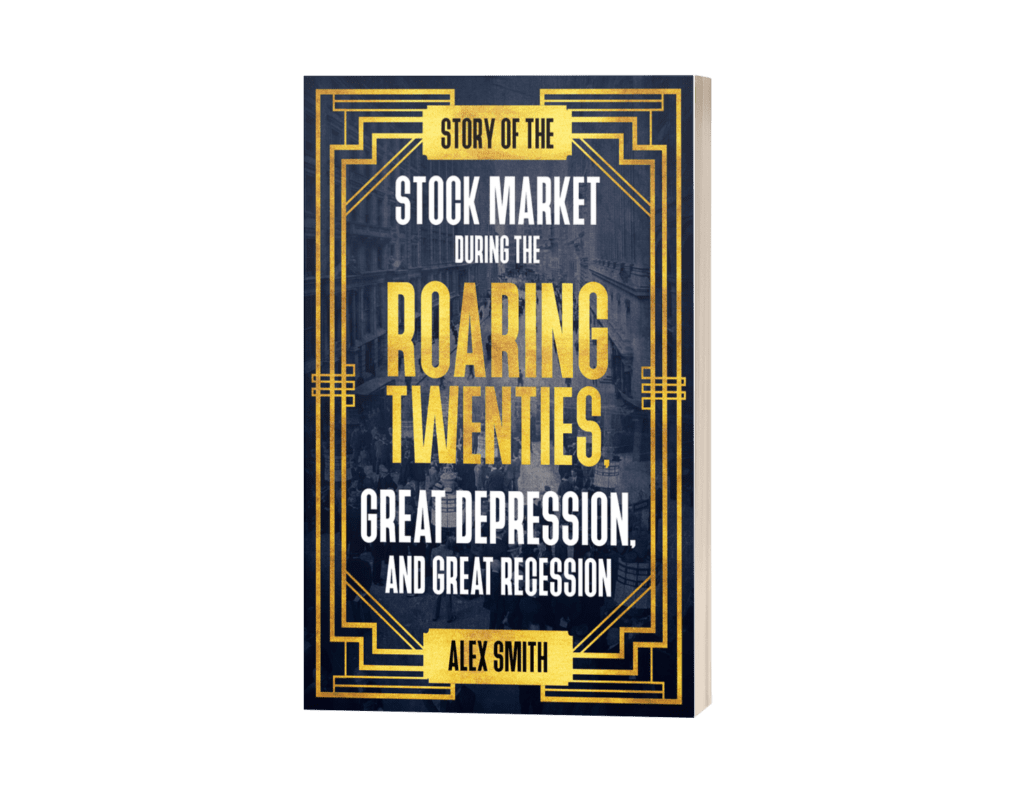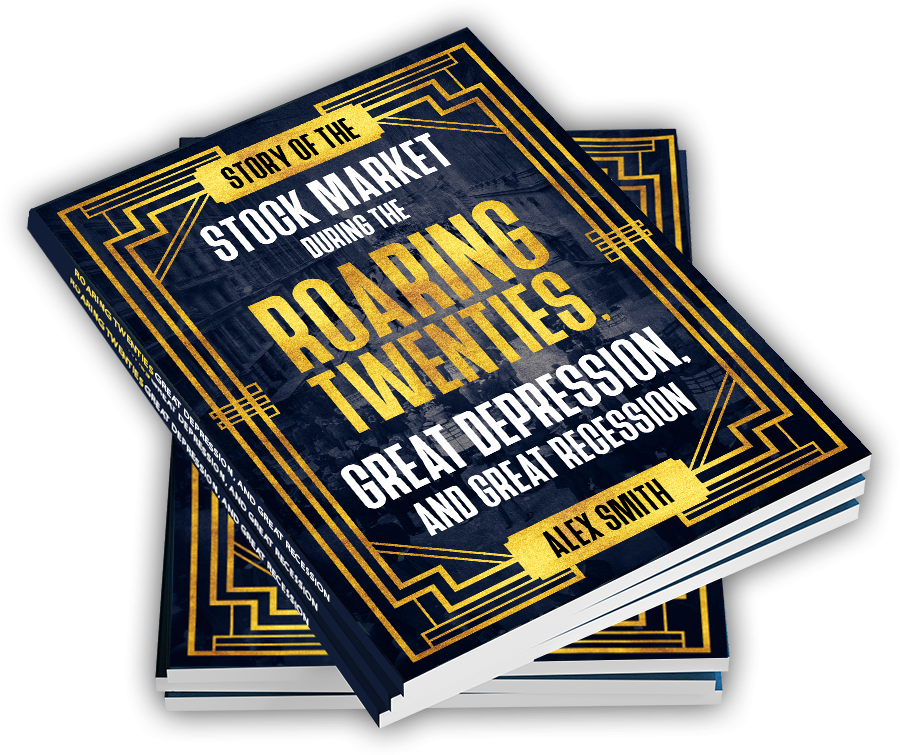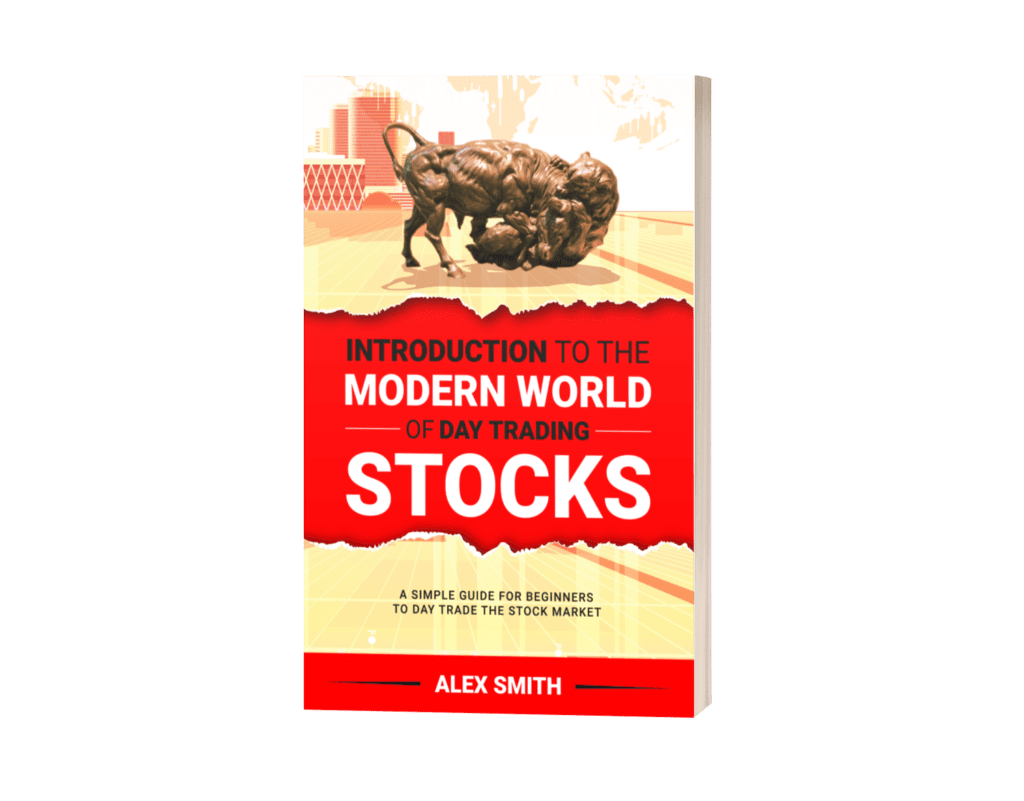Story of the Stock Market During the Roaring Twenties, Great Depression, and Great Recession.
Learn four investment lessons from major economic turning points that will help you weather stock market crashes better

About the Book
This book tells the story of the stock market during the Roaring Twenties, Great Depression, and Great Recession. It unveils the factors that made the 1920s roar and contributed to the 1929 stock market crash. It explores the role of the government in the Great Inflation, 1980s Recession, and Great Recession of 2008. Besides this, it highlights the similarities between the 1920s and 2020s to shed light on whether investors should expect another market crash that rivals that of 1929. In short, this book analyzes significant economic turning points to reveal major investment lessons that will help you weather stock market crashes better. This makes it the book to read if you have ever wondered what to do when the next stock market crash inevitably happens. Get your free copy below.
What’s Inside
The book takes you on an illuminating five-chapter journey that expands on the following:
- Chapter 1: The Roaring ‘20s
- Chapter 2: The Great Depression
- Chapter 3: The Great Recession
- Chapter 4: The Roaring ‘20s all over again?
- Chapter 5: The Major Investment Lessons

Get Your Free Ebook Now
About the Author

ALEX SMITH is an author, entrepreneur, and stock market educator. With over half a decade of experience investing in the stock market under his belt, Alex writes stock-market-related books that expand the knowledge base of market participants.
A husband, father, and grandfather, Alex is a food-loving traveler that has visited 32 states in the US with his lovely wife to enjoy their local cuisines and take in the beautiful sights.
Alex believes anyone can build wealth via the stock market and is currently on a mission to help as many people begin building wealth in the stock market through his books and articles.
Get more information and guidance from Alex by visiting acdspublishing.com.
Coming Soon

Introduction to the Modern World of Day Trading Stocks

Introduction to the Modern World of Value Investing
FAQs About Major Economic Turning Points
The roaring twenties was a period of rapid economic growth and social change in the United States. It is a period of dramatic social, economic, and political change in American history. It heralded a dramatic break between America’s past and future. It was a time of hope, prosperity, and cultural change. It was a period of economic growth, technological change, and the loosening of social codes that encouraged a lively and expressive youth culture centered around automobiles, jazz music, and bootleg liquor. Wall Street boomed, and the United States became the world’s richest and most powerful country.
The Great Depression was a period marked by a worldwide economic downturn and staggering levels of unemployment. It began in the United States after a significant drop in stock prices on October 29th, 1929, now known as Black Tuesday. The stock market crash wiped out millions of investors and ended an era of prosperity. Banks began to fail as people withdrew their savings, and businesses started to lay off workers. By 1933, nearly 12 million Americans were unemployed. The Great Depression lasted for a decade, officially ending in 1939, when the Second World War began.
- Stock market crash: In the United States, the stock market crash of October 1929 is often cited as one of the leading causes of the Great Depression. Before the crash, the American economy was booming; however, consumer confidence plummeted, and spending decreased after the stock market crashed. This decrease in spending led to reduced production, which caused businesses to lay off workers. As more and more people lost their jobs, the unemployment rate rose, and families struggled to make ends meet.
- Bank failure: In addition to the stock market crash, another factor that contributed to the Great Depression was the failure of banks. In early 1930, thousands of banks across America failed as people withdrew their money in a panic. This exacerbated the effects of the stock market crash and further decreased consumer confidence. The failure of banks also meant that people had less access to credit, which made it difficult for businesses to invest in new products or expand their operations.
- Agricultural overproduction: After World War I, agricultural prices declined due to overproduction and new technological advancements that increased efficiency. This put farmers in a difficult position as they struggled to make profits and support their families. In some cases, farmers were forced to abandon their land altogether.
The Great Recession was a global economic downturn that originated in the United States in 2007. It was caused by several factors, including the collapse of the subprime mortgage market and a deepening housing crisis. As the banking and real estate industries unraveled, the stock market crashed, and unemployment rose dramatically. The Great Recession lasted for several years and had a devastating effect on economies around the world. While the United States was hit particularly hard, many other countries also experienced sharp declines in GDP and increases in unemployment. In the aftermath of the recession, policymakers took steps to stabilize the economy and prevent future financial crises. However, many people continue to feel the effects of the Great Recession today.
The Great Inflation was a prolonged period of high inflation that started in the mid-1960s and lasted until the early 1980s. The inflation rate, as measured by the consumer price index, rose to as high as 14% in 1980. The leading cause of the Great Inflation was an increase in government spending on social programs and the Vietnam War. The government financed the resulting budget deficits by printing money, which led to higher prices for goods and services.
The Great Inflation had several detrimental effects, including low economic growth and high unemployment. It also caused financial hardship for many Americans, as their savings lost value and their incomes failed to keep pace with rising prices. Fortunately, the inflationary spiral was eventually broken by tight monetary policy and fiscal discipline. This led to falling prices and helped to bring about a period of sustained economic growth in the United States.
The 1980s recession lasted from July 1981 to November 1982. It was triggered by a tight monetary policy meant to fight mounting inflation. Despite its relatively short duration, the 1980s recession profoundly impacted the American economy. Unemployment rose sharply, reaching a peak of 10.8% in November 1982. Inflation also spiked, peaking at 12.5% in June 1981. Interest rates reached record highs, with the prime rate rising to 21.5% in December 1980.
As a result of these factors, GDP growth turned negative, falling by 2.2% in 1981 and 1.9% in 1982. Interestingly, the 1980s recession also ushered in a period of wage stagnation, as workers’ wages failed to keep pace with inflation. This wage stagnation would persist for more than two decades, becoming one of our time’s most significant economic challenges. While the 1980s recession was brutal for many Americans, it also laid the groundwork for the country’s eventual economic recovery.
A stock market crash is a sudden and sharp decline in the prices of stocks. It is typically triggered by a widespread sell-off, which can be caused by several factors, including fears of economic recession, uncertainty about the future, and sudden changes in interest rates. While a stock market crash can have a devastating effect on the economy, it is essential to remember that it is also a natural part of the market cycle. By understanding what causes market crashes, investors can be better prepared to weather them.

